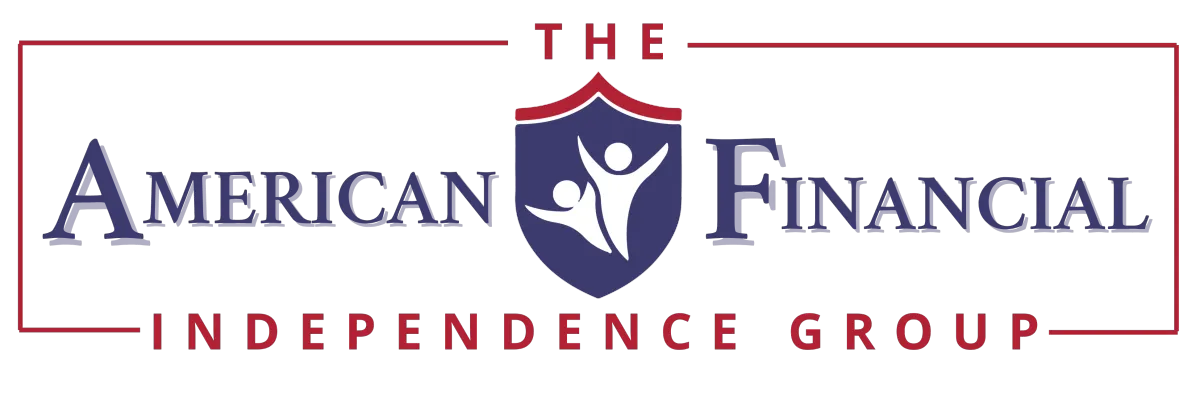BLOG, ARTICLES, & RESOURCES
Here's to growing together!

The Hidden Issues in 403b Plans: What Every Educator Needs to Know
Introduction: The Retirement Plan You Thought Was Safe
Imagine working hard your entire career, faithfully contributing to your 403b plan, only to find out that hidden fees and limited investment options have drained your savings. Sounds frustrating, right? Unfortunately, this is the reality for many educators who trust that their retirement plans are working in their best interest.
403b plans are often marketed as a safe and reliable way for teachers to save for retirement. But here’s the problem: these plans aren’t always what they seem. Many educators unknowingly pay high fees, get stuck with poor investment choices, and miss out on better alternatives.
So, let’s break it down. What are the biggest issues with 403b plans, and what can you do about them? Keep reading—I promise this is information you need to know.
The Big Problems with 403b Plans
1. Hidden (and High) Fees That Eat Away at Your Savings
One of the most common problems with 403b plans? The fees.
Many 403b plans are riddled with expenses that most educators don’t even realize they’re paying. Unlike 401k plans, which often have low-cost mutual funds, many 403b options are dominated by high-cost annuities—and annuities aren’t cheap. Here’s where your money is going:
Mortality & Expense Ratio (M&E fees): The insurance cost for a variable annuity—usually around 1.25% per year.
Subaccount Fees: Mutual funds within annuities charge their own fees—ranging from 0.50% to 2%.
Administrative Fees: Just to keep the account, you could be paying 0.15% to 0.50%.
Rider Fees: If you have any add-ons, like a guaranteed income rider, that’s another 0.5% to 1.5% gone.
2. Limited Investment Options
A well-designed retirement plan should offer diversification—a mix of investment choices that allow you to grow your savings efficiently. Unfortunately, many 403b plans limit your options to high-fee annuities or a handful of mutual funds, some of which aren’t even the best-performing ones on the market.
Compare this to 401k plans, which typically include low-cost index funds and ETFs, and you’ll see why 403b investors often end up paying more for less growth.
3. Confusing and Lackluster Guidance
Educators are not financial advisors—so why are they expected to navigate complex investment decisions on their own?
Unlike 401k plans, which often come with HR-supported financial education, 403b plans are frequently pushed by insurance agents—who may have an incentive to sell high-commission products.
Teachers are often left to figure out their investment choices alone, without clear guidance on which options are best for them.
4. Some Employers Don’t Offer the Best Providers
Even if you want to invest in a better 403b option, your school district may not provide access to top-tier providers. Many districts partner with insurance companies, meaning your choices are often limited to high-fee annuities instead of low-cost index funds.
5. Surrender Charges Lock You In
Ever try to move your money out of a bad 403b plan? If you have a variable annuity, you may get hit with surrender charges—fees that penalize you for moving your money elsewhere. These charges can range from 5% to 10% and may last for several years.
What Can Educators Do About It?
So, what’s the solution? Here’s what you can do today to take control of your retirement savings:
1. Know What You’re Paying
Call your 403b provider and ask these questions:
What are all my fees? (M&E, subaccounts, admin, etc.)
Do I have a surrender charge? If so, when does it expire?
What investment options do I have?
2. Consider a 457 Plan
Many states offer 457 plans, which are another type of tax-deferred retirement plan—but often with lower fees and better investment options. If your district offers a 457, it may be worth looking into.
3. Look Into a Roth IRA
If your 403b options are poor, consider a Roth IRA instead. Roth IRAs offer:
Tax-free growth and withdrawals in retirement
More investment choices (mutual funds, ETFs, stocks)
No hidden annuity fees
4. Explore Cash Value Life Insurance
Cash Value Life Insurance (CVLI) is another tax-advantaged option that lets you:
Grow money tax-deferred
Access tax-free withdrawals
Have no contribution limits
5. Get Independent Advice
Before signing up for a 403b plan, talk to a fee-only financial advisor—not a commissioned salesperson. They can help you find a plan that works for you without pushing expensive products.
FAQs About 403b Plans
Q: Should I contribute to my 403b if my school district offers a match?
Yes! If your district offers an employer match, take full advantage of it. But still, check the fees—you may want to contribute just enough to get the match and invest the rest in a Roth IRA.
Q: Can I roll over my 403b into a better plan?
In many cases, yes. If you leave your job, you can roll your 403b into an IRA, which typically offers better investment choices and lower fees.
Q: Are all 403b plans bad?
No, but many have high fees and poor investment choices. The key is to research your options before committing.
Final Thoughts: Take Control of Your Retirement
Educators dedicate their lives to shaping future generations—but who’s looking out for your future? If you’re in a 403b plan, don’t assume it’s working in your best interest. Do your homework, ask the tough questions, and explore your options.
🔹 Your challenge: Call your 403b provider today and ask about your fees. Then, drop a comment below and let me know what you find out!
Remember, it’s not just about saving—it’s about keeping more of what you earn!

The Hidden Issues in 403b Plans: What Every Educator Needs to Know
Introduction: The Retirement Plan You Thought Was Safe
Imagine working hard your entire career, faithfully contributing to your 403b plan, only to find out that hidden fees and limited investment options have drained your savings. Sounds frustrating, right? Unfortunately, this is the reality for many educators who trust that their retirement plans are working in their best interest.
403b plans are often marketed as a safe and reliable way for teachers to save for retirement. But here’s the problem: these plans aren’t always what they seem. Many educators unknowingly pay high fees, get stuck with poor investment choices, and miss out on better alternatives.
So, let’s break it down. What are the biggest issues with 403b plans, and what can you do about them? Keep reading—I promise this is information you need to know.
The Big Problems with 403b Plans
1. Hidden (and High) Fees That Eat Away at Your Savings
One of the most common problems with 403b plans? The fees.
Many 403b plans are riddled with expenses that most educators don’t even realize they’re paying. Unlike 401k plans, which often have low-cost mutual funds, many 403b options are dominated by high-cost annuities—and annuities aren’t cheap. Here’s where your money is going:
Mortality & Expense Ratio (M&E fees): The insurance cost for a variable annuity—usually around 1.25% per year.
Subaccount Fees: Mutual funds within annuities charge their own fees—ranging from 0.50% to 2%.
Administrative Fees: Just to keep the account, you could be paying 0.15% to 0.50%.
Rider Fees: If you have any add-ons, like a guaranteed income rider, that’s another 0.5% to 1.5% gone.
2. Limited Investment Options
A well-designed retirement plan should offer diversification—a mix of investment choices that allow you to grow your savings efficiently. Unfortunately, many 403b plans limit your options to high-fee annuities or a handful of mutual funds, some of which aren’t even the best-performing ones on the market.
Compare this to 401k plans, which typically include low-cost index funds and ETFs, and you’ll see why 403b investors often end up paying more for less growth.
3. Confusing and Lackluster Guidance
Educators are not financial advisors—so why are they expected to navigate complex investment decisions on their own?
Unlike 401k plans, which often come with HR-supported financial education, 403b plans are frequently pushed by insurance agents—who may have an incentive to sell high-commission products.
Teachers are often left to figure out their investment choices alone, without clear guidance on which options are best for them.
4. Some Employers Don’t Offer the Best Providers
Even if you want to invest in a better 403b option, your school district may not provide access to top-tier providers. Many districts partner with insurance companies, meaning your choices are often limited to high-fee annuities instead of low-cost index funds.
5. Surrender Charges Lock You In
Ever try to move your money out of a bad 403b plan? If you have a variable annuity, you may get hit with surrender charges—fees that penalize you for moving your money elsewhere. These charges can range from 5% to 10% and may last for several years.
What Can Educators Do About It?
So, what’s the solution? Here’s what you can do today to take control of your retirement savings:
1. Know What You’re Paying
Call your 403b provider and ask these questions:
What are all my fees? (M&E, subaccounts, admin, etc.)
Do I have a surrender charge? If so, when does it expire?
What investment options do I have?
2. Consider a 457 Plan
Many states offer 457 plans, which are another type of tax-deferred retirement plan—but often with lower fees and better investment options. If your district offers a 457, it may be worth looking into.
3. Look Into a Roth IRA
If your 403b options are poor, consider a Roth IRA instead. Roth IRAs offer:
Tax-free growth and withdrawals in retirement
More investment choices (mutual funds, ETFs, stocks)
No hidden annuity fees
4. Explore Cash Value Life Insurance
Cash Value Life Insurance (CVLI) is another tax-advantaged option that lets you:
Grow money tax-deferred
Access tax-free withdrawals
Have no contribution limits
5. Get Independent Advice
Before signing up for a 403b plan, talk to a fee-only financial advisor—not a commissioned salesperson. They can help you find a plan that works for you without pushing expensive products.
FAQs About 403b Plans
Q: Should I contribute to my 403b if my school district offers a match?
Yes! If your district offers an employer match, take full advantage of it. But still, check the fees—you may want to contribute just enough to get the match and invest the rest in a Roth IRA.
Q: Can I roll over my 403b into a better plan?
In many cases, yes. If you leave your job, you can roll your 403b into an IRA, which typically offers better investment choices and lower fees.
Q: Are all 403b plans bad?
No, but many have high fees and poor investment choices. The key is to research your options before committing.
Final Thoughts: Take Control of Your Retirement
Educators dedicate their lives to shaping future generations—but who’s looking out for your future? If you’re in a 403b plan, don’t assume it’s working in your best interest. Do your homework, ask the tough questions, and explore your options.
🔹 Your challenge: Call your 403b provider today and ask about your fees. Then, drop a comment below and let me know what you find out!
Remember, it’s not just about saving—it’s about keeping more of what you earn!

DISCLAIMER:
This content is for informational purposes only.
BLOGS & RESOURCES

The Hidden Issues in 403b Plans: What Every Educator Needs to Know
Introduction: The Retirement Plan You Thought Was Safe
Imagine working hard your entire career, faithfully contributing to your 403b plan, only to find out that hidden fees and limited investment options have drained your savings. Sounds frustrating, right? Unfortunately, this is the reality for many educators who trust that their retirement plans are working in their best interest.
403b plans are often marketed as a safe and reliable way for teachers to save for retirement. But here’s the problem: these plans aren’t always what they seem. Many educators unknowingly pay high fees, get stuck with poor investment choices, and miss out on better alternatives.
So, let’s break it down. What are the biggest issues with 403b plans, and what can you do about them? Keep reading—I promise this is information you need to know.
The Big Problems with 403b Plans
1. Hidden (and High) Fees That Eat Away at Your Savings
One of the most common problems with 403b plans? The fees.
Many 403b plans are riddled with expenses that most educators don’t even realize they’re paying. Unlike 401k plans, which often have low-cost mutual funds, many 403b options are dominated by high-cost annuities—and annuities aren’t cheap. Here’s where your money is going:
Mortality & Expense Ratio (M&E fees): The insurance cost for a variable annuity—usually around 1.25% per year.
Subaccount Fees: Mutual funds within annuities charge their own fees—ranging from 0.50% to 2%.
Administrative Fees: Just to keep the account, you could be paying 0.15% to 0.50%.
Rider Fees: If you have any add-ons, like a guaranteed income rider, that’s another 0.5% to 1.5% gone.
2. Limited Investment Options
A well-designed retirement plan should offer diversification—a mix of investment choices that allow you to grow your savings efficiently. Unfortunately, many 403b plans limit your options to high-fee annuities or a handful of mutual funds, some of which aren’t even the best-performing ones on the market.
Compare this to 401k plans, which typically include low-cost index funds and ETFs, and you’ll see why 403b investors often end up paying more for less growth.
3. Confusing and Lackluster Guidance
Educators are not financial advisors—so why are they expected to navigate complex investment decisions on their own?
Unlike 401k plans, which often come with HR-supported financial education, 403b plans are frequently pushed by insurance agents—who may have an incentive to sell high-commission products.
Teachers are often left to figure out their investment choices alone, without clear guidance on which options are best for them.
4. Some Employers Don’t Offer the Best Providers
Even if you want to invest in a better 403b option, your school district may not provide access to top-tier providers. Many districts partner with insurance companies, meaning your choices are often limited to high-fee annuities instead of low-cost index funds.
5. Surrender Charges Lock You In
Ever try to move your money out of a bad 403b plan? If you have a variable annuity, you may get hit with surrender charges—fees that penalize you for moving your money elsewhere. These charges can range from 5% to 10% and may last for several years.
What Can Educators Do About It?
So, what’s the solution? Here’s what you can do today to take control of your retirement savings:
1. Know What You’re Paying
Call your 403b provider and ask these questions:
What are all my fees? (M&E, subaccounts, admin, etc.)
Do I have a surrender charge? If so, when does it expire?
What investment options do I have?
2. Consider a 457 Plan
Many states offer 457 plans, which are another type of tax-deferred retirement plan—but often with lower fees and better investment options. If your district offers a 457, it may be worth looking into.
3. Look Into a Roth IRA
If your 403b options are poor, consider a Roth IRA instead. Roth IRAs offer:
Tax-free growth and withdrawals in retirement
More investment choices (mutual funds, ETFs, stocks)
No hidden annuity fees
4. Explore Cash Value Life Insurance
Cash Value Life Insurance (CVLI) is another tax-advantaged option that lets you:
Grow money tax-deferred
Access tax-free withdrawals
Have no contribution limits
5. Get Independent Advice
Before signing up for a 403b plan, talk to a fee-only financial advisor—not a commissioned salesperson. They can help you find a plan that works for you without pushing expensive products.
FAQs About 403b Plans
Q: Should I contribute to my 403b if my school district offers a match?
Yes! If your district offers an employer match, take full advantage of it. But still, check the fees—you may want to contribute just enough to get the match and invest the rest in a Roth IRA.
Q: Can I roll over my 403b into a better plan?
In many cases, yes. If you leave your job, you can roll your 403b into an IRA, which typically offers better investment choices and lower fees.
Q: Are all 403b plans bad?
No, but many have high fees and poor investment choices. The key is to research your options before committing.
Final Thoughts: Take Control of Your Retirement
Educators dedicate their lives to shaping future generations—but who’s looking out for your future? If you’re in a 403b plan, don’t assume it’s working in your best interest. Do your homework, ask the tough questions, and explore your options.
🔹 Your challenge: Call your 403b provider today and ask about your fees. Then, drop a comment below and let me know what you find out!
Remember, it’s not just about saving—it’s about keeping more of what you earn!
DISCLAIMER:
The content is developed from sources believed to be providing accurate information. The information in this material is not intended as tax or legal advice. Please consult legal or tax professionals for specific information regarding your individual situation. Some of this material was developed and produced by FMG Suite to provide information on a topic that may be of interest. FMG Suite is not affiliated with the named representative, broker - dealer, state - or SEC - registered investment advisory firm. The opinions expressed and material provided are for general information, and should not be considered a solicitation for the purchase or sale of any security.
We take protecting your data and privacy very seriously. As of January 1, 2020 the California Consumer Privacy Act (CCPA) suggests the following link as an extra measure to safeguard your data: Do not sell my personal information.
Life insurance & annuity services provided by Advanced Financial, Steve Sousa CLU, CA License#0476190
Brian Walker CA License #0H13310 | Jessica Markworth CA License #0E56830 | Jill Sousa CA License # 0L05626
Securities investment services provided by Inception Financial Services with advisory services offered through AlphaStar Capital Management.

